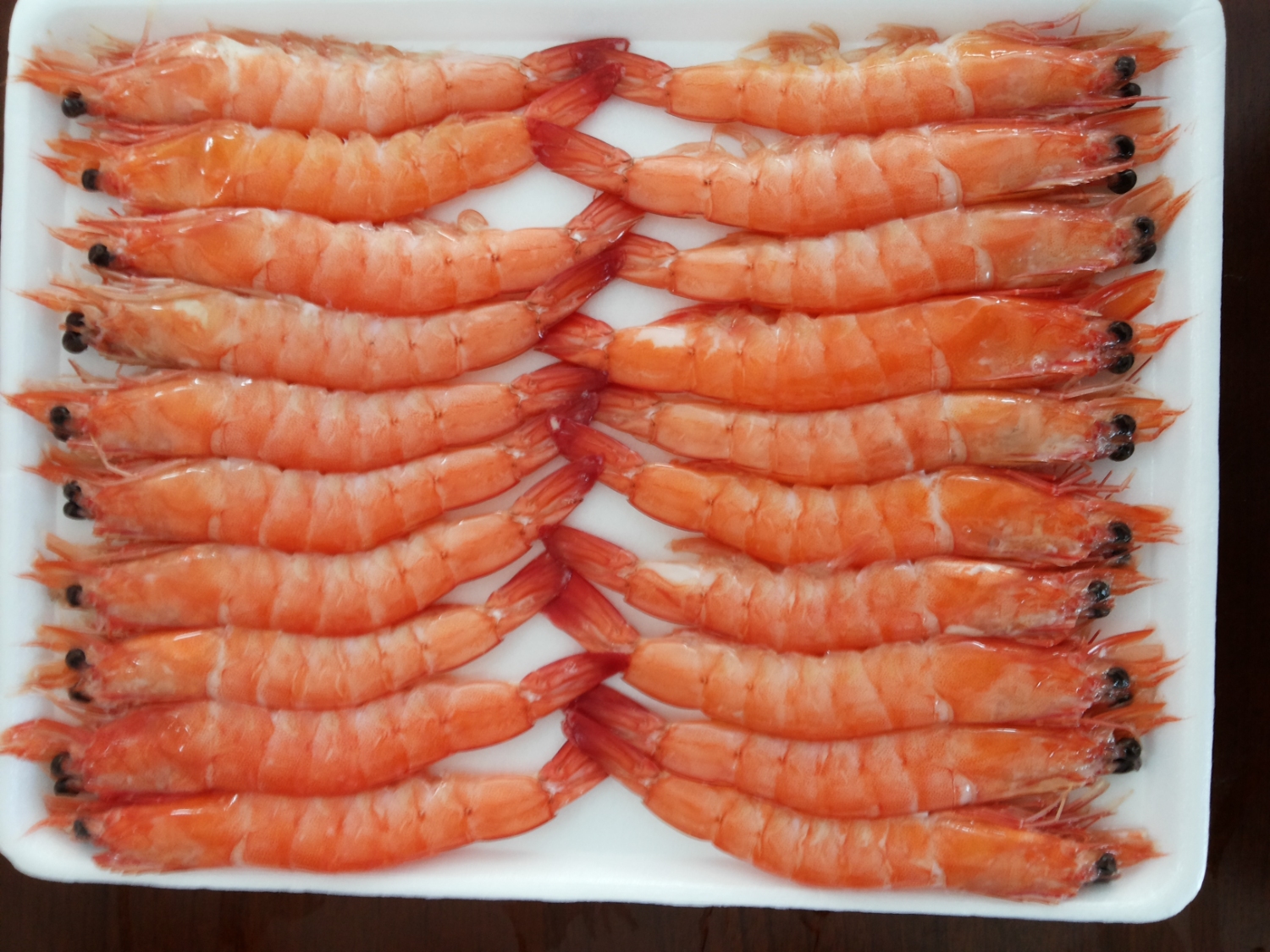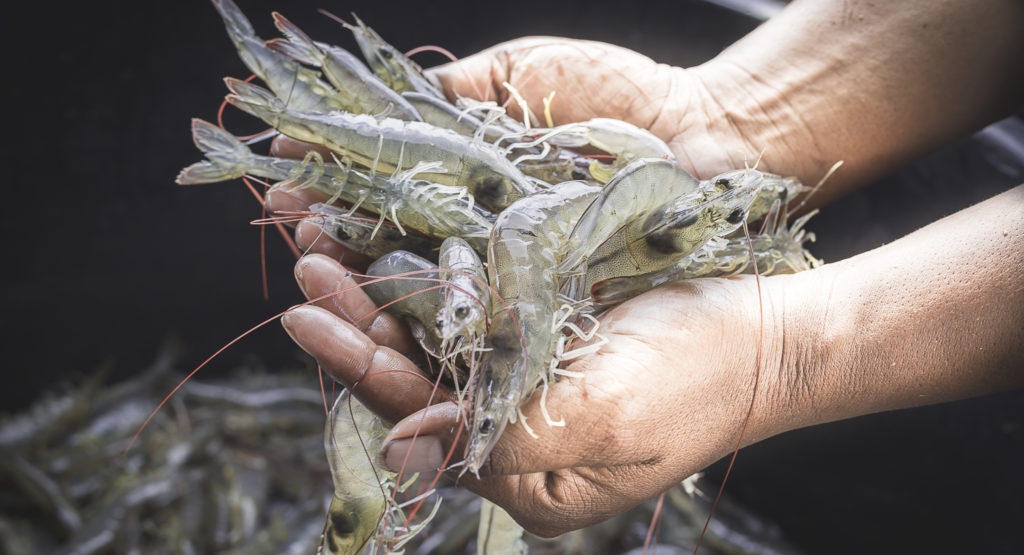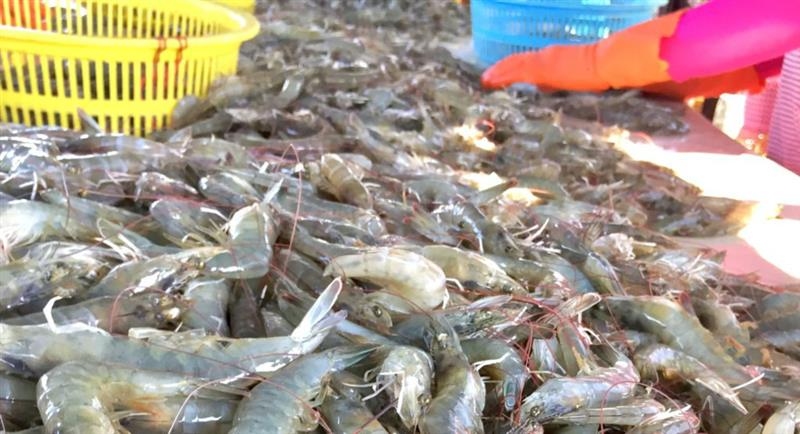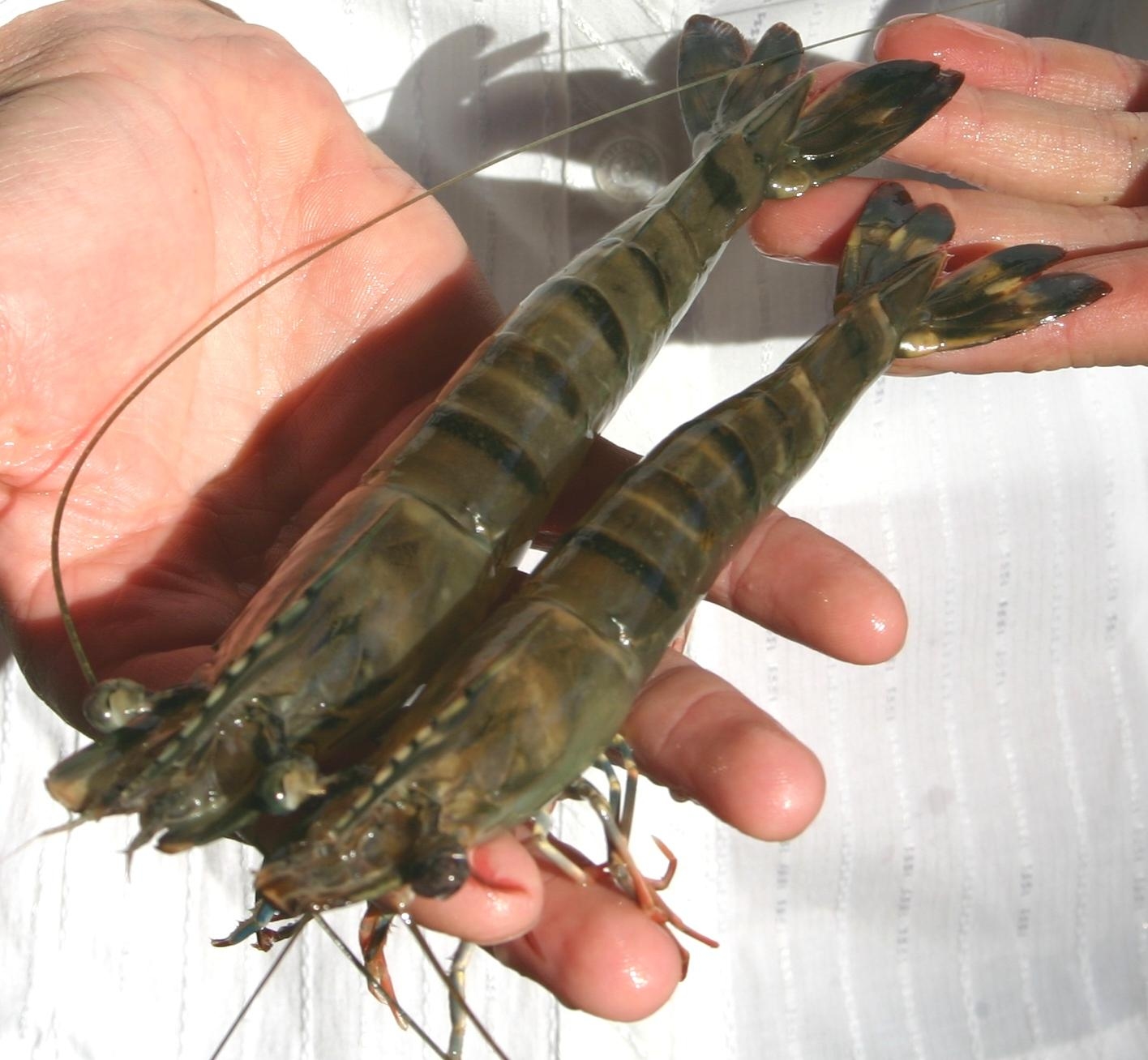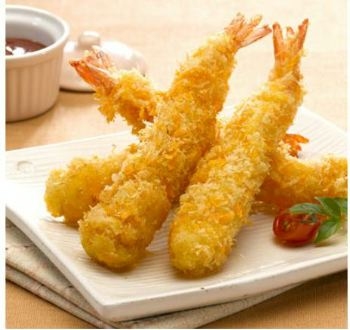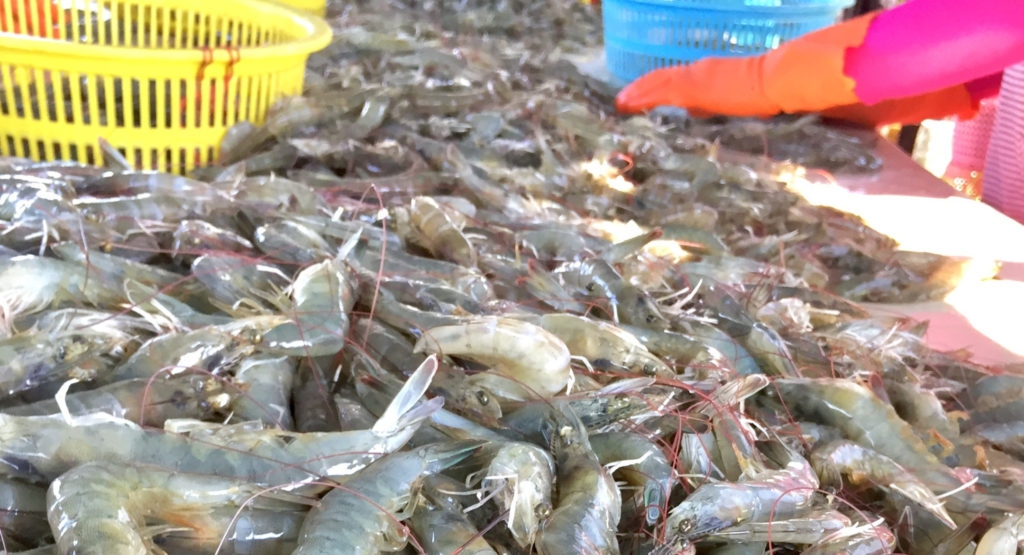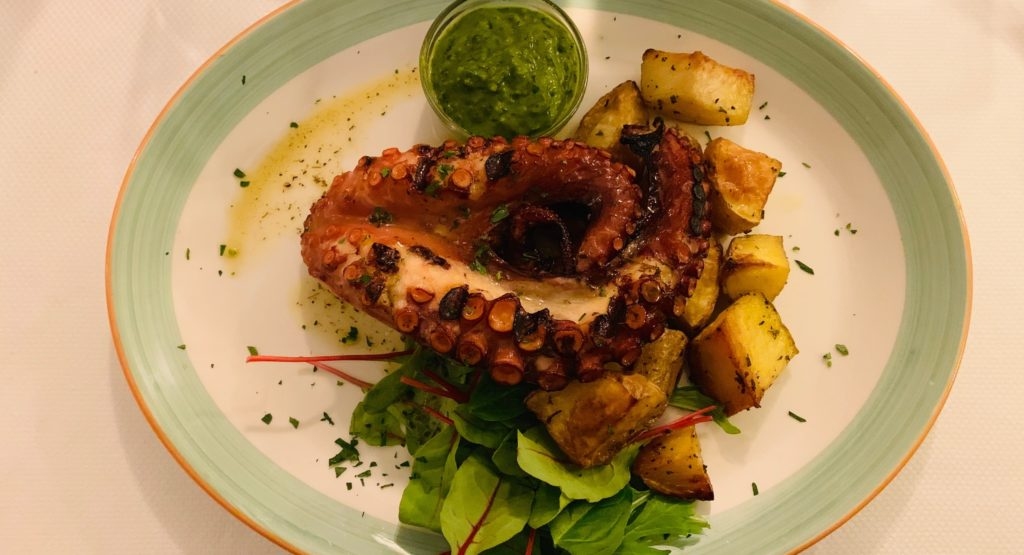
Indian shrimp prices unlikely to ease as 2020 comes around
Indian shrimp prices unlikely to ease as 2020 comes around
By Neil Ramsden Dec. 11, 2019 09:35 GMT
With US demand a little slow and no great influx of raw materials expected in December, sources anticipate stability in Indian shrimp prices at the turn of the year.
One source, a seafood trader, told Undercurrent News demand from the US was "not so vibrant" at the moment, with overall import figures down in September for the first time in 2019. National Oceanic and Atmospheric Administration data shows US imports (from all destinations) were 63,737 metric tons that month, down from 64,476t.
(Though, imports from India were still up 11% year-on-year, at 27,645t). "The US and Canada importers seem to be focusing on their sales for the upcoming holiday season", the trader said.
Where there has been good demand is China, several sources confirmed.
"At present most Indian packers are more interested in China, since the Chinese buyers are offering more attractive prices, apparently for Chinese New Year," said this first source. Said holiday will be celebrated on Jan. 25. Updating in December, he confirmed demand -- especially from China -- remained good, and that prices were fairly stable in several producing nations, India included.
A second source, with an Indian producer, said he didn't expect prices to come down "as Chinese factories continue buying raw material for their local market and this trend is expected to continue post-Chinese New Year".
He also added that China's block on shrimp imports from several of Ecuador's largest companies -- now fully reversed as of the end of November -- impacted buying prices in China, "but the production in India for head-on, shell-on shrimp is only a fraction of Ecuador's, so it was not a big influencer on local Indian prices".
Finally, Durai Murugan, secretary of the Shrimp Association of Pattukottai, Tamil Nadu, told Undercurrent there was good demand from exporters in November, with the depreciation of the Indian rupee helping to bring farmers a good price.
"For next year we expect good pricing, I'm hearing good news coming out of China as they are showing good interest heading into Chinese New Year," he said. "Prices are likely to be steady."
Finally, a US-based importer confirmed he expected prices to remain reasonably static.
"I think prices would overall remain static for 21/25 and smaller sizes until the summer crop of 2020 arrivals, which we can expect in April/May," he told Undercurrent. "We might see prices slightly moving up again on 16/20s as the current crop arrivals start slowing down later in December or early January."
Supplies of 13/15 and larger could continue to be short, but he still doesn't expect prices to move up much on these sizes, he said. The low availability overall would likely offset downward price pressure in the next few weeks of soft export demand.
"Markets here are quiet now, which is normal for this time of the year. Recent buying for the early Chinese New Year has kept raw material prices firm. The offer prices from packers have also remained firm," he said.
Steady harvests
While demand looks set to remain steady, supplies are not expected to increase a great deal, sources told Undercurrent.
"The second crop in Orissa is expected to be over in December," said the trader. "That means we have to get our supply from Andhra Pradesh after New Year’s. Basically, most of the farms in Andhra Pradesh take 90-110 days for a harvest, and we were told that the harvesting at full scale will start by the end of November. Only then will we really see how productivity will be."
On the west coast of India -- Gujarat in particular -- there have been reports of water quality problems, though this trader has not seen any significant impact from this so far, he added.
The farmgate prices in this state saw an upward trend on larger sizes, and a "slightly downward trend on smaller shrimp", in November, he said. Speaking again in December, he said Gujarat's prices remained stable and harvests were picking up, but were not yet in full swing.
In Andhra Pradesh, after a brief drop in farm gate prices, they seem to have stabilized again. "We saw an increase of INR 30 on 20 counts, while the price for the rest (30 counts and below) were unchanged," this trader said in November.
Again, updating Undercurrent in December, he said harvests appeared to be picking up. "The average counts that are being harvested are 40-70 range. It is quite rare to see 20-25 counts since farmers are avoiding the risks associated with growing the shrimp to larger sizes." Prices here are showing an upward trend on almost all sizes, he added.
"The upward trend on pricing is also witnessed in West Bengal."
As can be seen at Undercurrent's prices portal, 2019 prices in Andhra Pradesh have been more stable this year, but lower than in 2017 -- and than in 2018, for parts of the year.
India vannamei ex-farm, HOSO 60pcs/kg
The trader also said that while Indian prices have come up a little in December, they remain lower than in Vietnam and "even Indonesia", especially for 60-count.
At the recent Infofish conference in Bangkok, Thailand, Anil Kumar, joint director of Marine Products Export Development Authority (MPEDA), said he was “surprised” by the robustness of India’s shrimp production despite low global shrimp prices.
Noting the pessimism about India’s prospects in the first half of 2019, Kumar said: “Everybody was anticipating that prices have gone down from last year, there were rumors of lots of diseases there, but the good news is that actually the data shows that production has gone up."
India is on track to beat the doubters and grow its exports of shrimp in 2019, after a recovery in volumes shipped in the third quarter, latest Indian figures show.
The second source, with an Indian producer, noted in November that Indian supply has been weak over the last nine months, "with prices constantly moving higher, though we see in the last two weeks prices have started cooling off".
But, he said, there is not enough raw material to support a big drop in prices.
"Harvests from the second crop have begun but with low densities being seeded due to fear of disease we don’t expect a major surge in supplies, and again, demand in China along with regular shipments to the US will keep raw material prices stable."
"Expanding production capacities -- many of which are joint ventures with no real growth in farm output year-to-date in 2019 -- will keep the prices steady, which on the other side is good encouragement to farmers who are mainly small and medium sizes to constantly expand their cultivatable land area," he added.
Murugan added that prices were likely to be steady as the majority of harvests were almost finished in Tamil Nadu, and farmers there should be restocking in February.
"Prices are keeping firm on 40 and 30 counts. Most of the availability in Indian markets is around 70 to 50 counts."
Contact the author neil.ramsden@undercurrentnews.com
Source: undercurrentnews.com
Readers' opinions
The trader also said that while Indian prices have come up a little in December, they remain lower than in Vietnam and "even Indonesia", especially for 60-count.
At the recent Infofish conference in Bangkok, Thailand, Anil Kumar, joint director of Marine Products Export Development Authority (MPEDA), said he was “surprised” by the robustness of India’s shrimp production despite low global shrimp prices.
Noting the pessimism about India’s prospects in the first half of 2019, Kumar said: “Everybody was anticipating that prices have gone down from last year, there were rumors of lots of diseases there, but the good news is that actually the data shows that production has gone up."
India is on track to beat the doubters and grow its exports of shrimp in 2019, after a recovery in volumes shipped in the third quarter, latest Indian figures show.
The second source, with an Indian producer, noted in November that Indian supply has been weak over the last nine months, "with prices constantly moving higher, though we see in the last two weeks prices have started cooling off".
But, he said, there is not enough raw material to support a big drop in prices.
"Harvests from the second crop have begun but with low densities being seeded due to fear of disease we don’t expect a major surge in supplies, and again, demand in China along with regular shipments to the US will keep raw material prices stable."
"Expanding production capacities -- many of which are joint ventures with no real growth in farm output year-to-date in 2019 -- will keep the prices steady, which on the other side is good encouragement to farmers who are mainly small and medium sizes to constantly expand their cultivatable land area," he added.
Murugan added that prices were likely to be steady as the majority of harvests were almost finished in Tamil Nadu, and farmers there should be restocking in February.
"Prices are keeping firm on 40 and 30 counts. Most of the availability in Indian markets is around 70 to 50 counts."
Contact the author neil.ramsden@undercurrentnews.com
Source: undercurrentnews.com
Other news
- A recovery for the shrimp market? 17/04/2024
- Shrimp market: Fear of inflation and declining demand 22/10/2022
- Summer demand remains strong in the United States of America and Europe 08/11/2021
- Global supply chains are being battered by fresh COVID surges 18/08/2021
- Animal Health and Welfare in Aquaculture 17/08/2021
- Pangasius Imports Outpacing Tilapia 10/08/2021
- Growth in India's Shrimp Production and Exports 08/08/2021
- Decline in shrimp exports to China makes shrimps cheaper in India for domestic market 03/08/2021
- Rabobank sees plenty of positives for both shrimp and salmon sectors 29/07/2021
- Asia’s Shrimp Connoisseurs: Japan, Taiwan And South Korea 02/07/2021


